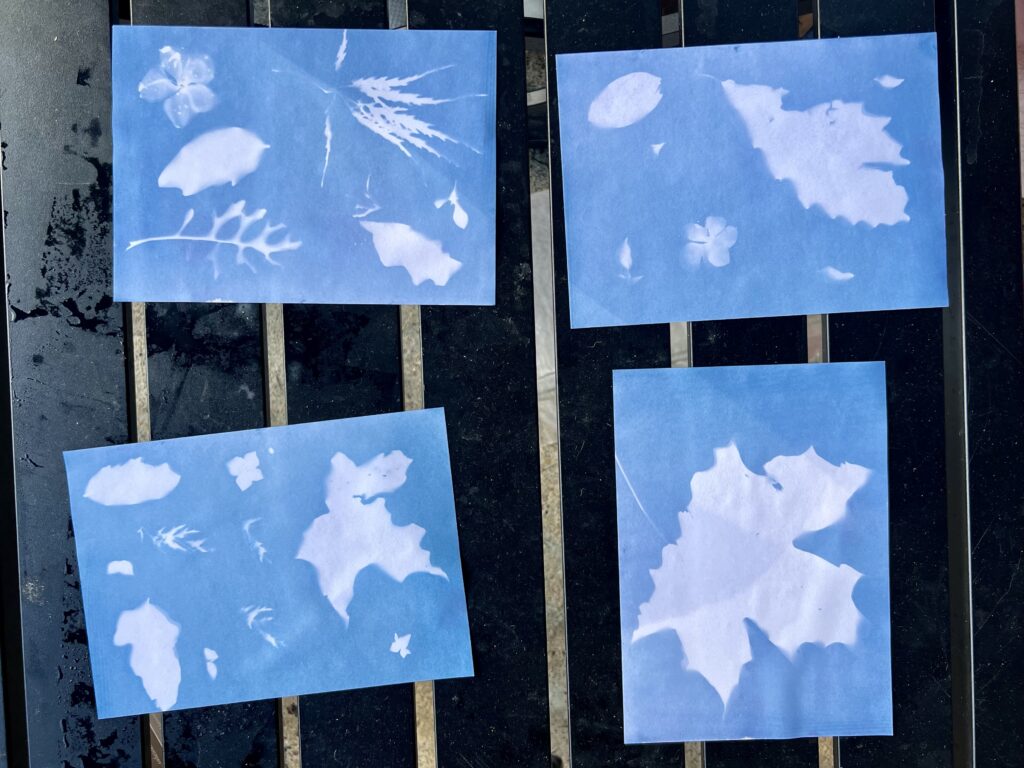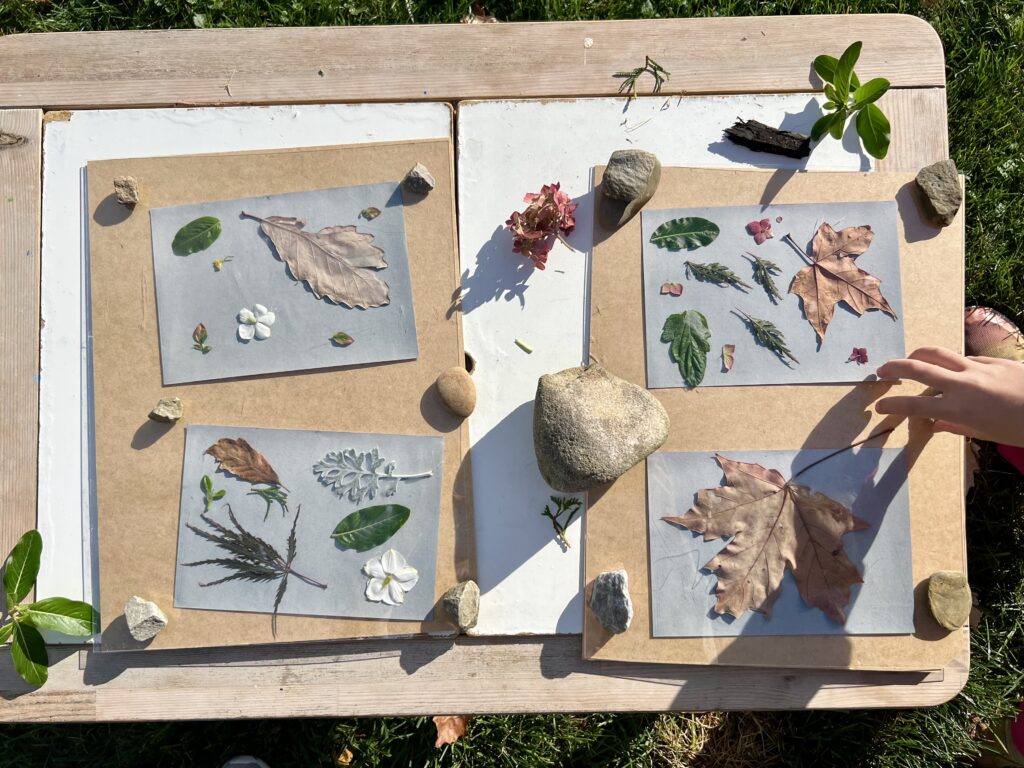I don’t know if anyone remembers doing this activity as a child but I specifically recall this outdoor activity in science class in middle school! With the use of special paper, we made leaf prints through a reaction to sunlight.

Our Leaf Prints
We started out scouring the yard for some items that we thought might make nice prints. I told them to find some pretty leaves they thought would turn into nice photos. Initially they all came back with some beautiful colorful leaves. We talked about how the color would not show up and instead to look at the shape of the leaf. This time they came back with a variety of leaves and even decided to pick some flowers. Once they determined which items they wanted to print, we laid them out in the pattern they wanted.
A Reaction to Sunlight

We did this activity after school, so the sun was actually already heading towards setting. It was still a very sunny day, but I am not sure we accounted for the direction of the sunlight. To begin, leaves are not flat so even with some pressure from the top, some of our leaves were still pressing up. This allowed for some sunlight to get in through the edges of the leaves. In the end, our leaf prints were not crisp. While maybe disappointing for me, my kids were still thrilled with the results and the reaction!
The History and Science Behind the Print
Cyanotype prints date back to 1840 when they were believed to be developed by Sir John Herschel. A cyanotype is a slow-reaction to the ultraviolet and blue light spectrum. This produces a monochrome, blue color print. The process includes simply two chemicals, water, and a source that absorbs the chemicals. Those two chemicals are ferric ammonium citrate and potassium ferricyanide. When exposed to direct sunlight, the combination of the UV light and the citrate reduce the iron. The results in the blue pigment. By running it through cold water, the water soluble iron salts are washed away and the parts exposed to UV light turn blue where the non-water soluble pigment remains.
Supplies
- Cyanotype Paper
- Water
- Leaves/flowers
Plans for Future Prints: A Reaction to Sunlight
This was a learning experience for us all! In the end, we learned all about chemical reactions and UV light. We even talked a little about sunscreen and protection from UV light. We also learned about the angle of the sun and how that could impact our prints. The best was at the end they were brainstorming other things they could make with prints like this and how to eliminate sunlight coming through the edges!
